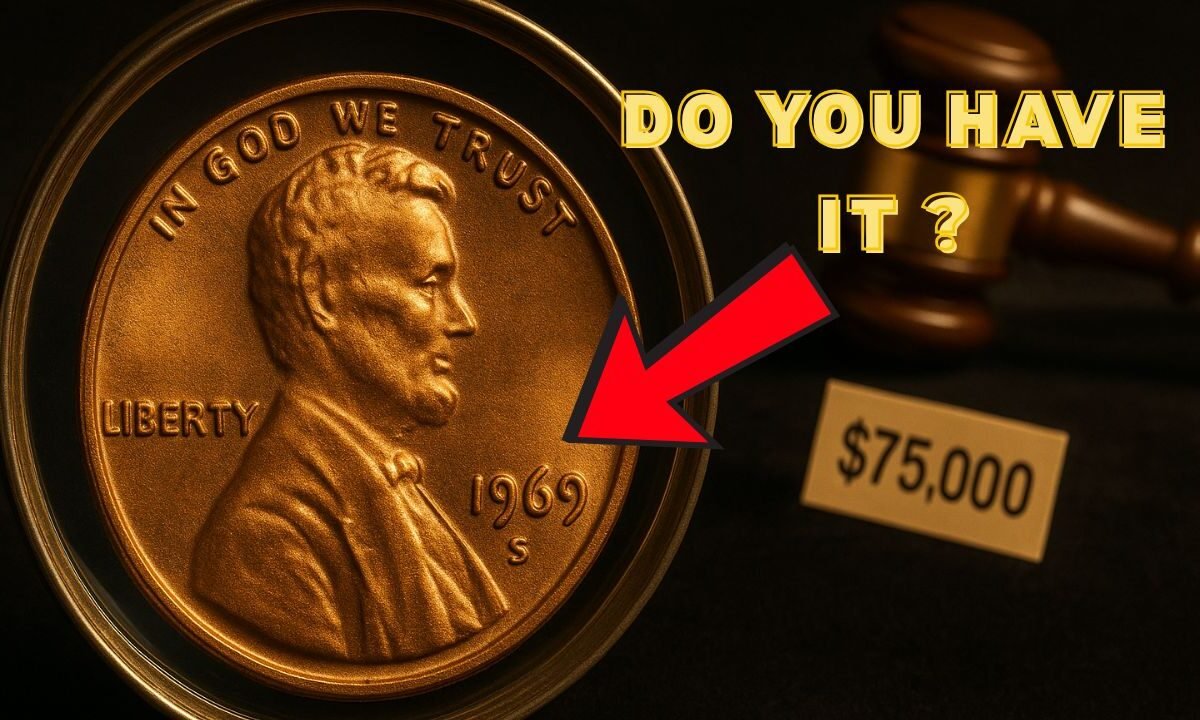The 1969‑S Doubled Die Obverse Cent is one of the most sought-after modern U.S. pennies in the coin-collecting world.
With its striking error and extreme rarity, top-grade examples routinely command sale prices well above $75,000, making it a flagship piece for serious numismatists.
In this article we’ll cover its history, identifying features, market values, how many exist, and what drives its value so high.
What is the 1969-S Doubled Die Obverse Cent?
This variety is a business-strike Lincoln Memorial cent minted at the United States Mint San Francisco (mint mark S).
The key error: the doubled die on the obverse (front) means that the date “1969”, the words “LIBERTY” and “IN GOD WE TRUST” show visible doubling (as if stamped twice). The mint mark S was added later and is not doubled — that’s a key distinguishing feature.
Because the doubled-die effect is dramatic and apparent to the naked eye, collectors noticed it quickly. Yet very few authentic examples are known to exist, making this penny extremely rare and valuable.
How rare is it?
| Detail | Information |
|---|---|
| Approximate surviving count | Estimated around 30 to 50 specimens in all grades. |
| Grading certification | Major services (PCGS/NGC) list only a few dozen attributed coins. |
| Mint mark | “S” (San Francisco) — mint mark not doubled. |
| Year-and-error variety | 1969-S Doubled Die Obverse (FS-101) |
| Range of auction values | From $50,000+ in lower grades to $600,000+ in top mint-state condition. |
Because of the extremely low number of genuine coins and the high demand, each example is vigilantly authenticated — there are many counterfeits and altered pieces on the market.
Key features to identify
Recognising this variety is crucial because of its value and because fakes exist. Look for:
- Obvious doubling on the date “1969”, on “LIBERTY” and on “IN GOD WE TRUST”.
- No doubling on the “S” mint mark (it should appear normal).
- Strong, bold luster if uncirculated. High-grade coins often appear MS63+ or better with red or red-brown surfaces.
- Die characteristics: the doubling is die-induced (hub doubling) and not machine doubling (which usually appears flat).
Recent market values and auction records
While you might have heard “$75,000+” as a headline figure, in truth the market for the 1969-S Doubled Die Obverse Cent is far stronger. Below are some recent real-world figures:
- In a lower uncirculated grade (MS63 Red), examples have sold in the $57,500 range.
- A classic specimen graded MS64 Red sold at public auction for $126,500.
- At the extreme end, a finest-known example graded MS66 Red CAC realised $601,875.
These auction values show that while “$75,000” might serve as a minimum benchmark today, serious collector coins are trading in the six-figure range.
Why the value is so high
Several factors converge to push this penny’s value upward:
- Scarcity: With only a few dozen known, it’s among the rarest business-strike Lincoln cents.
- Visibility of error: The doubling is bold and clearly visible, which appeals to both specialists and general collectors.
- Numismatic fame: The variety has enjoyed decades of major media coverage and collector interest, boosting demand.
- Specimen condition: High-grade, red-lustre examples are extremely elusive and command premium multiples over lower grades.
- Authentication challenges: Because counterfeits exist, certified coins with reputable third-party grading (PCGS/NGC) carry significantly higher value—buyers trust them more.
What you should do if you have or find one
If you believe you’ve got a 1969-S Doubled Die Obverse Cent:
- Have it professionally graded and authenticated by a major grading service.
- Compare key features: doubling on date/legends, clean “S” mark, correct weight and minting.
- Understand the market: lower-grade coins may still sell for tens of thousands; high-grade specimens sell for hundreds of thousands.
- Keep provenance: auction records, grading-certificate numbers and history help in resale.
The 1969-S Doubled Die Obverse Cent stands out as one of the most valuable and coveted modern U.S. penny varieties.
What began as a minting error became a numismatic legend, and its auction record speaks for itself — multiple six-figure sales, rising scarcity and strong collector demand.
If you ever come across one in your change, or a well-presented example in a collection, you’re looking at a piece of coin-collecting gold.
Proper authentication and grading are key — for this penny, the difference between tens of thousands and six figures is all in the details.
FAQs
Is the value really only $75,000?
No — $75,000 is a lower-end threshold. Authentic specimens, especially in high grade or red category, routinely exceed $100,000, and some have sold for over $600,000.
What grade do I need for high value?
While any authentic example is valuable, the most significant jump happens in uncirculated grades (MS63–MS66+), preferably with red or red-brown coloration.
How can I tell if a coin is genuine or a fake?
Look for bold doubling on the obverse date/lettering, no doubling on the mint mark, check certification from reputable grading companies, and compare with known genuine examples. Counterfeits are common, so certification is highly recommended.

